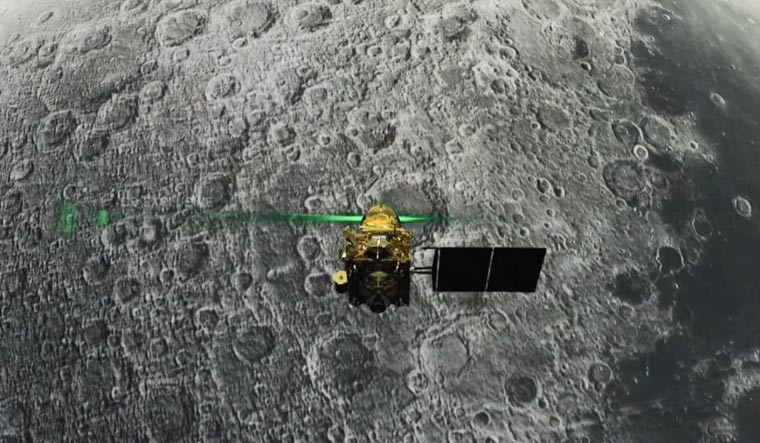The NASA on Tuesday claimed to have found Chandrayaan-2's Vikram lander, which crashed on the surface of the Moon in September, crediting a Chennai-based mechanical engineer for helping it trace the debris of the ambitious lunar mission by painstakingly comparing before and after images of the landing site. NASA released the mosaic image of the site on September 26, inviting people to compare it with images of the same area before the crash to find signs of the lander. The first person to come up with a positive identification was Chennai-based IT professional Shanmuga Subramanian, who confirmed the identification of the crashing site of Vikram by comparing before and after images.
The Indian Space Research Organisation (ISRO), however, sought to downplay NASA's claims on Wednesday, saying Chandrayaan-2’s orbiter had already found Vikram, and that it was declared on ISRO’s website as well.
Subramanian talks on how he found Vikram lander:
It was something challenging as even NASA can't find out so why can't we try out? and that's the thought that led me to search for Vikram lander. I don't think Vikram lander would have made such an impact on the minds of Indian public if it had landed successfully. Since it was lost, there has been lot of discussion in public forums as well as on my FB page regarding what should have malfunctioned.
The crash landing of Vikram made more people interested in it and it also got eventually hooked me, which lead to me searching NASA's pic for nearly some 4-5 hours every night. Initially there was lot of false positives I got (that were) corrected by Twitterati and one of the tweets led to me a Reddit forum where they had the exact intended landing location and the path of Vikram.
Though there was no data available about the path of Vikram lander, I eventually concluded it would have come from North Pole as one of the tweets from 'cgbassa' said Vikram has crossed the North Pole of the Moon. And from ISRO's live images, I made out it would have stopped short of around 1 km from the landing spot so it eventually led to me searching around 2 sq km around the landing area.
I searched around North of the landing spot as Vikram approached the landing spot only from the north and though there was lot of false positives, I found a tiny little dot and compared with previous LRO images up to last nine years which eventually confirmed it would be the debris. Then I reached out to NASA.
They replied only on Tuesday after they confirmed it as the surface was not illuminated. Before going public, they need to make 100 per cent sure that it is Vikram lander. I was waiting for the confirmation and eventually got it on Tuesday. Without LRO's Data this wouldn't have been possible.
LRO's data is a treasure trove. I would suggest students and others to help out NASA, ISRO and other space organisations by building a good database of LRO images with features like comparison etc. Currently we have to compare it manually (and I) wish someone can do more on that. With NASA's scientists time-crunched for their Moon missions it should be the duty of us to give them something what they need.
And I feel my finding should inspire thousands of others, too, as it clearly proves someone who is not involved in space exploration or a scientist can also do a lot as far as space is concerned.


